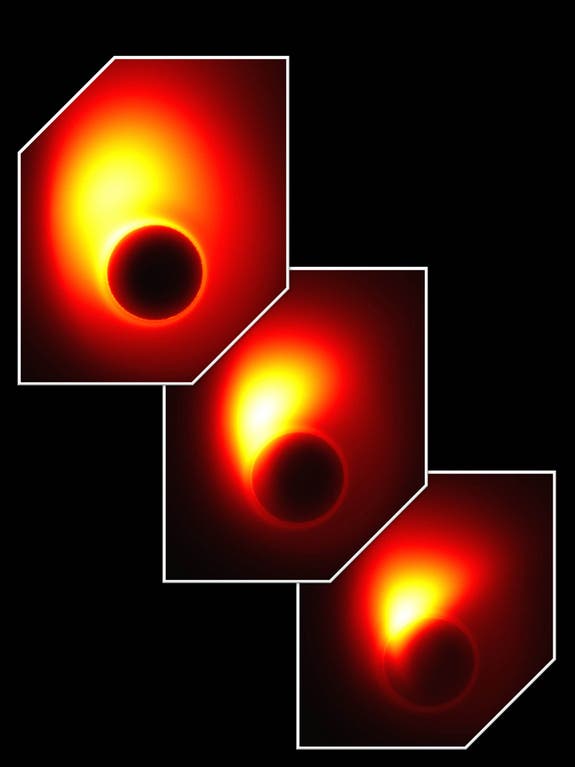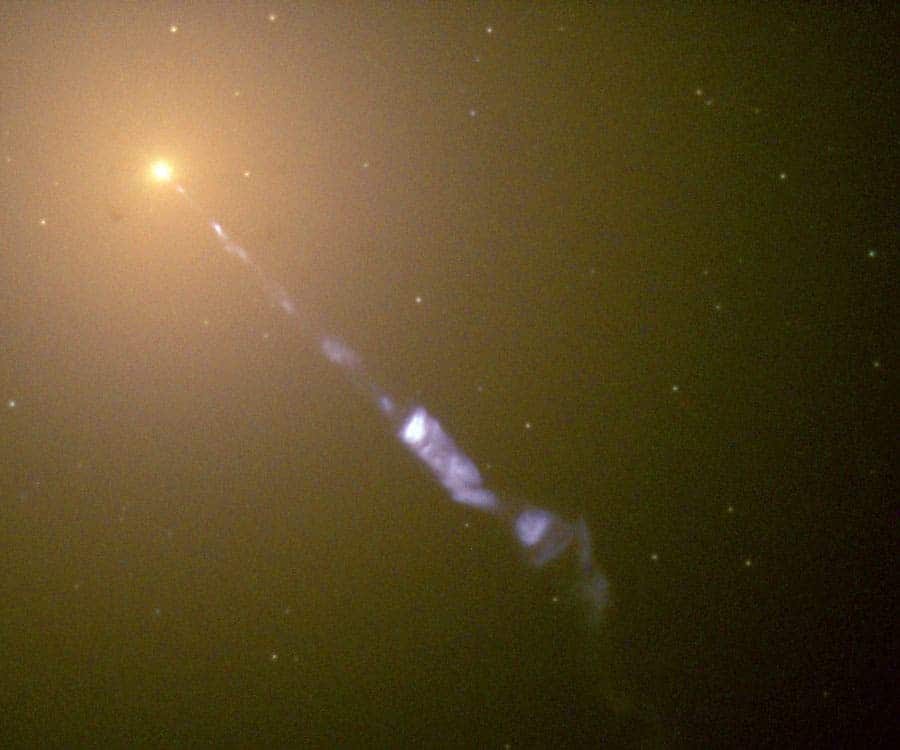At the center of most galaxies lie black holes, some of which are classed as supermassive black holes. These cosmic bodies can have a mass billions of times greater than that of the sun, crammed in just a fraction of the latter. Gravity goes completely haywire in such an environment where this humongous mass gets crushed in a very tight space. At the edge of black holes, gravity is so strong that any matter unfortunate enough to be in its proximity will get sucked in and never escape, not even light. This perfectly defined boundary is called the event horizon, once matter passes this line it’s lost forever. Now, a team of international researchers have for the first time measured the radius of a black hole, located at the center of a distant galaxy.
“Once objects fall through the event horizon, they’re lost forever,” Shep Doeleman, assistant director of the MIT Haystack Observatory and research associate at the Smithsonian Astrophysical Observatory, said in a statement Thursday (Sept. 27). “It’s an exit door from our universe. You walk through that door, you’re not coming back.”
In order to meet their goals of measuring an black hole radius – the closest distance at which matter can approach before being irretrievably pulled into the black hole – the team of researchers, lead by scientists at MIT’s Haystack Observatory, arranged a telescope array dubbed the “Event Horizon Telescope” (EHT), comprised of Hawaii’s James Clerk Maxwell Telescope, the Submillimeter Telescope in Arizona, and two telescopes at CARMA in California. Using a technique called Very Long Baseline Interferometry, or VLBI, the instruments of all these observatories located thousands of miles from one another could be linked, forming a sort of “virtual telescope”. The resolving power of a single telescope is as big as the space between the disparate dishes, thus allowing astronomers to peer through some of the distant galaxies.

Simulated event horizon-resolving images for the ultra-relativistic jet. It shows how the extreme gravity of the black hole in M87 distorts the appearance of the jet near the event horizon. Part of the radiation from the jet is bent by gravity into a ring that is known as the ‘shadow’ of the black hole.
And distant it was. The instruments of the combined Event Horizon Telescope were directed on M87, a galaxy some 50 million light years from the Milky Way. At the center of M87 lies a black hole with a mass 6 billion times that of the sun. At the edge of this black hole, astronomers observed glow of matter – they had just found the event horizon.
Now, the event horizon itself is impossible to measure, since it’s imaginary, but what scientists could measure was the closest stable orbit in which matter can circle the black hole, without being lost forever. Matter doesn’t get sucked all at once in the black hole, though, instead a sort of traffic jam ensues where matter, like gas and dust, build up into what’s called an accretion disk, which in familiar terms resembles a flat pancake.

A photo of a huge jet emanating from the center of the galaxy M87, taken by Hubble in 1999, back when there were still very little known about them. The faint dots of light surrounding M87’s center are large ancient globular clusters of stars. (c) NASA
Thus, the scientists found the accretion disk to be only 5.5 times the size of the black hole event horizon – that’s five times the size of the solar system, or 750 times the distance from Earth to the sun. Also, the same accretion disk was found to be the source of powerful jets of light often times seen radiating from the center of galaxies. These jets interact with the wind of particles coming from the accretion disk, which focuses them into narrow beams that move at nearly the speed of light – in some cases, they’re so energetically charged that they’re able to propel particles for hundreds of thousands of light years, sending them entirely out of the galaxy, where the particles eventually slow down by interacting with the intergalactic medium. Until now, no telescope was powerful enough to verify the idea that these jets come from accretion disks around black holes.
“The basic nature of jets is still mysterious,” says Christopher Reynolds, a professor of astronomy at the University of Maryland. “Many astrophysicists suspect that jets are powered by black hole spin … but right now, these ideas are still entirely in the realm of theory. This measurement is the first step in putting these ideas on a firm observational basis.”









